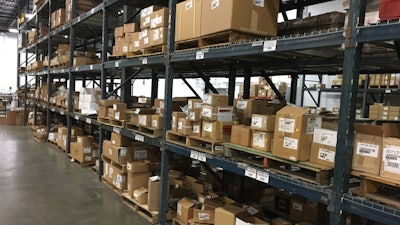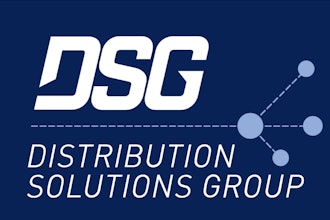
Forward-thinking distributors are using consignment inventory to ensure their top customers are stocked with the inventory they need – when they need it.
Consigned inventory is stocked and managed at a customer site such as a warehouse, stockroom or jobsite instead of a distributor’s own warehouse, and the distributor does not take payment for it until it is pulled from stock at the customer site.
For distributors, consigned inventory can be a profitable strategy when coupled with the right technology for tracking usage. This is the type of partnership that distributors can initiate with their top income-generating customers. It can be a critical tool in their arsenal to retain and grow business with these customers.
ID's 2021 Survey of Operations is Now Open! Complete the survey and enter to win one of six $10 AmEx gift cards. The more respondents, the better the data!
It’s important to follow best practices for consigned inventory for both distributor and customers to get the maximum benefit:
Get expert help in drawing up a contract. Know what the pitfalls of consignment can be before getting into an agreement with the customer. An expert can help in identifying issues before they arise. Distributors will be storing their product at the customer site and they’ll want to know if it will be secure, who has access to the site, and whether the product will be insured by the customer. They’ll need to know who will be responsible for replacing damaged or missing product. It’s important to have a contract to hold both parties accountable. The contract might stipulate that, when the distributor takes an inventory or manual count, the numbers must reconcile or the customer is on the hook for the difference. If the consignment terms are set up-front, the distributor can always go back to the contract to address any issues.
READ MORE: How Suppliers Use Consigned Inventory to Strengthen Distributor Relationships
Trust your partner – but verify. The distributor needs to trust their customers to provide reliable and verifiable information, especially when it comes to billing on consumption. Consigned-inventory tracking software will provide a reliable, accurate accounting of exactly who used the product and when so that you get paid without any issues.
Choose the right customers to partner with. It’s not the amount of business a customer does that’s important. Consider whether they generate a healthy overall net margin to justify the extra effort of consignment inventory.
Invest in automatic replenishment tools. Eliminate guesswork and manual tracking. To be successful with consignment, distributors need an automatic replenishment app, one that offers the ability to track levels in real-time and to set minimum and maximum levels to trigger reorders of just what their customers need when they need it. This saves the distributor cash and carrying costs; with those additional savings, they can offer consignment to additional customers.
Limit the product mix for consigned inventory. Most customers would love to have all of their product on consignment, so it’s important to limit inventory to items that are profitable for distributors to consign. It doesn’t make sense to stock inventory for spot buys or low-turnover items. Distributors are more profitable when providing consignment on items that move quickly, have a healthy net margin, and then monitor the replenishment on them. A higher-value, higher-turns product mix generates a better revenue stream for a distributor and, in turn, creates a more valuable business partnership with the customer.
Build an economic moat. Warren Buffett refers to the ability to keep a competitive edge over the competition as building an “economic moat.” By leveraging consignment inventory, distributors have opportunities to create strong partnerships with customers along with greater profitability. A successful consignment program will increase customer spend and loyalty.
There’s a risk in consigning inventory, and it’s not for everyone. It’s important to take a strategic approach, talk to experts in your industry, and embrace best practices  Rockwell
Rockwell
Rock Rockwell is CEO of eTurns. eTurns TrackStock is an automated inventory replenishment app that optimizes stockroom and truck inventory while lowering procurement costs. Contact Rockwell at [email protected].






















